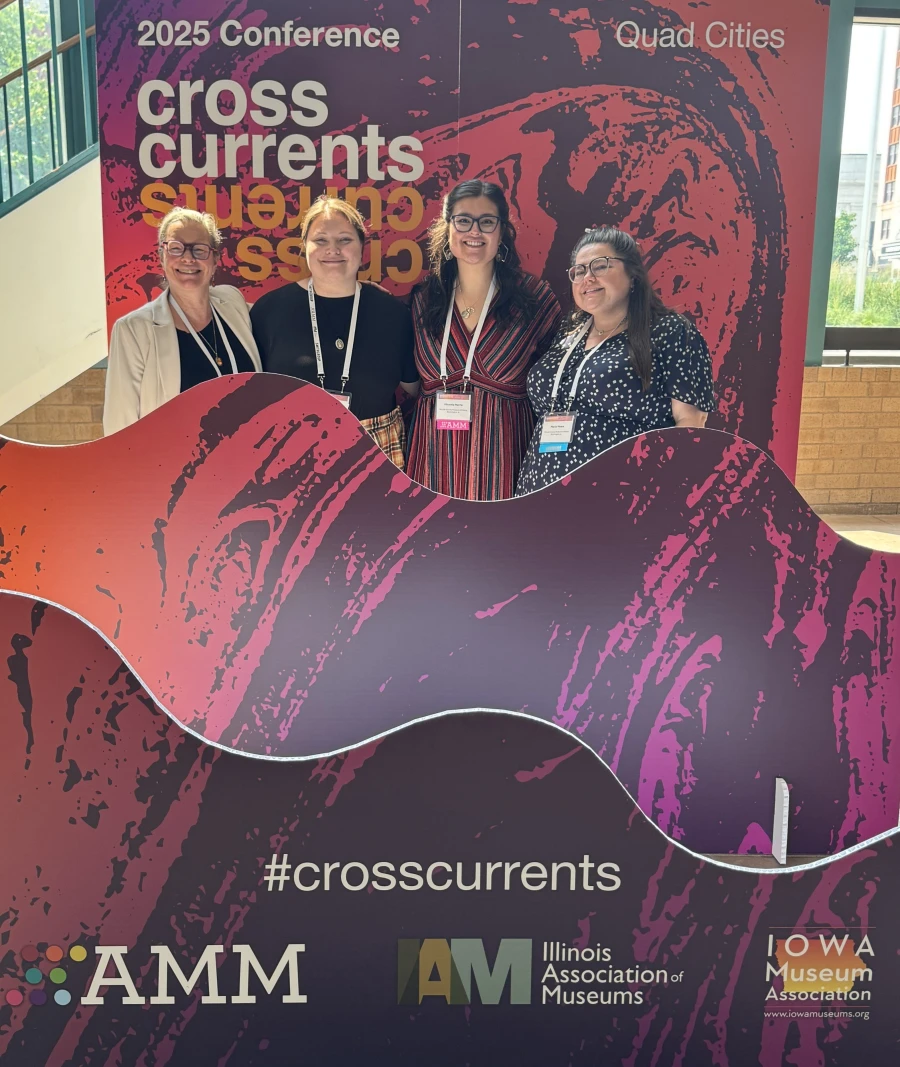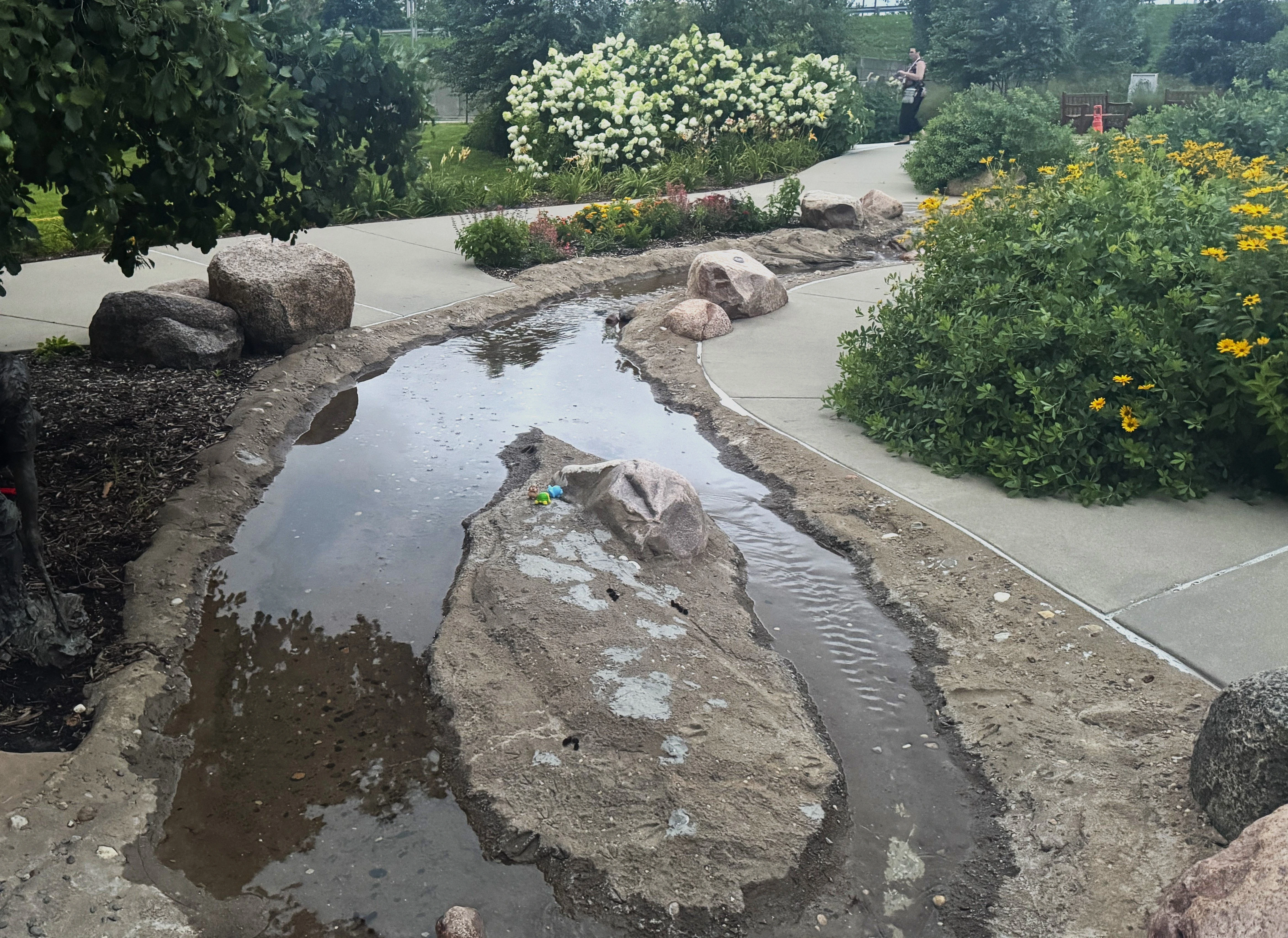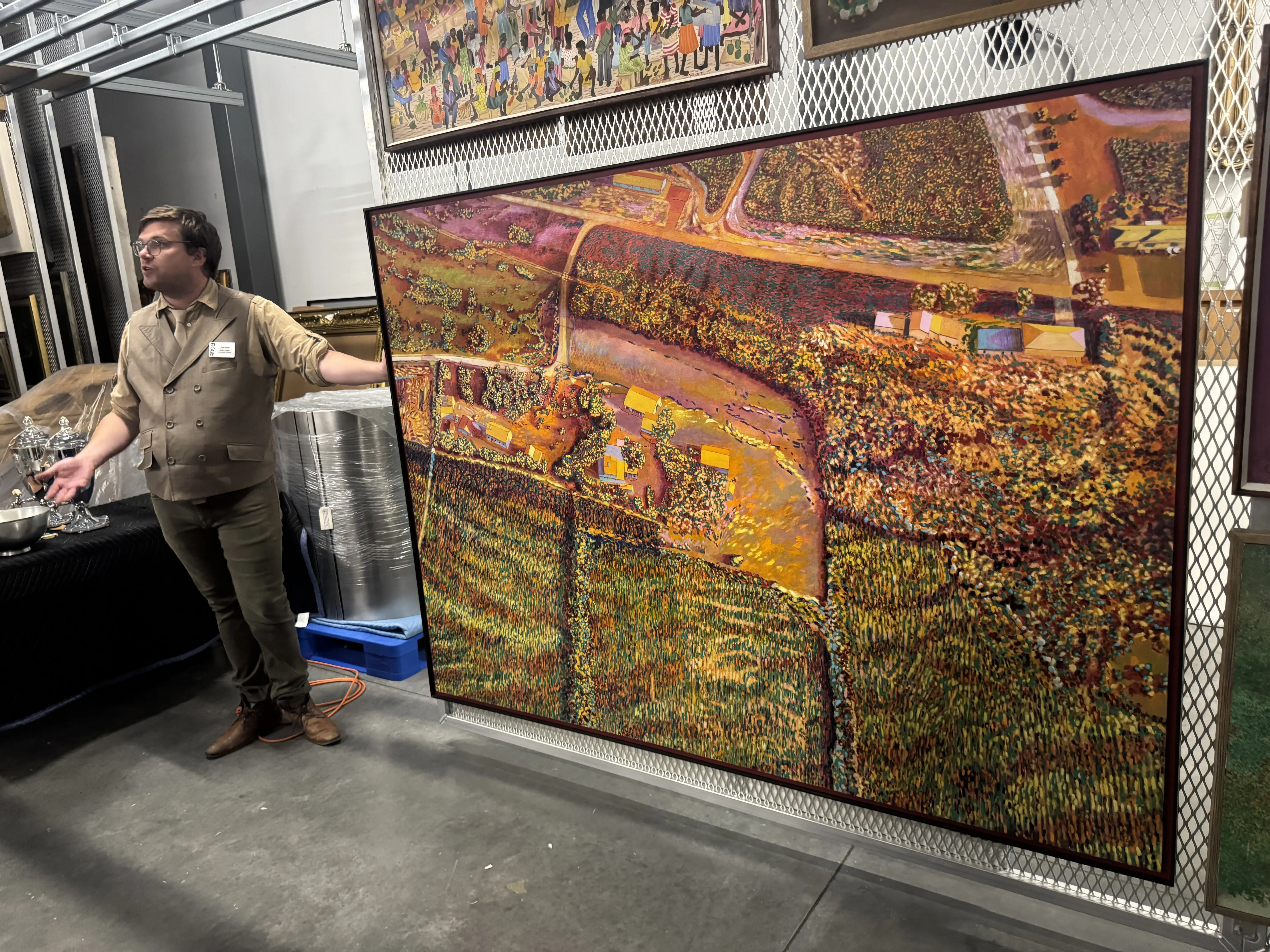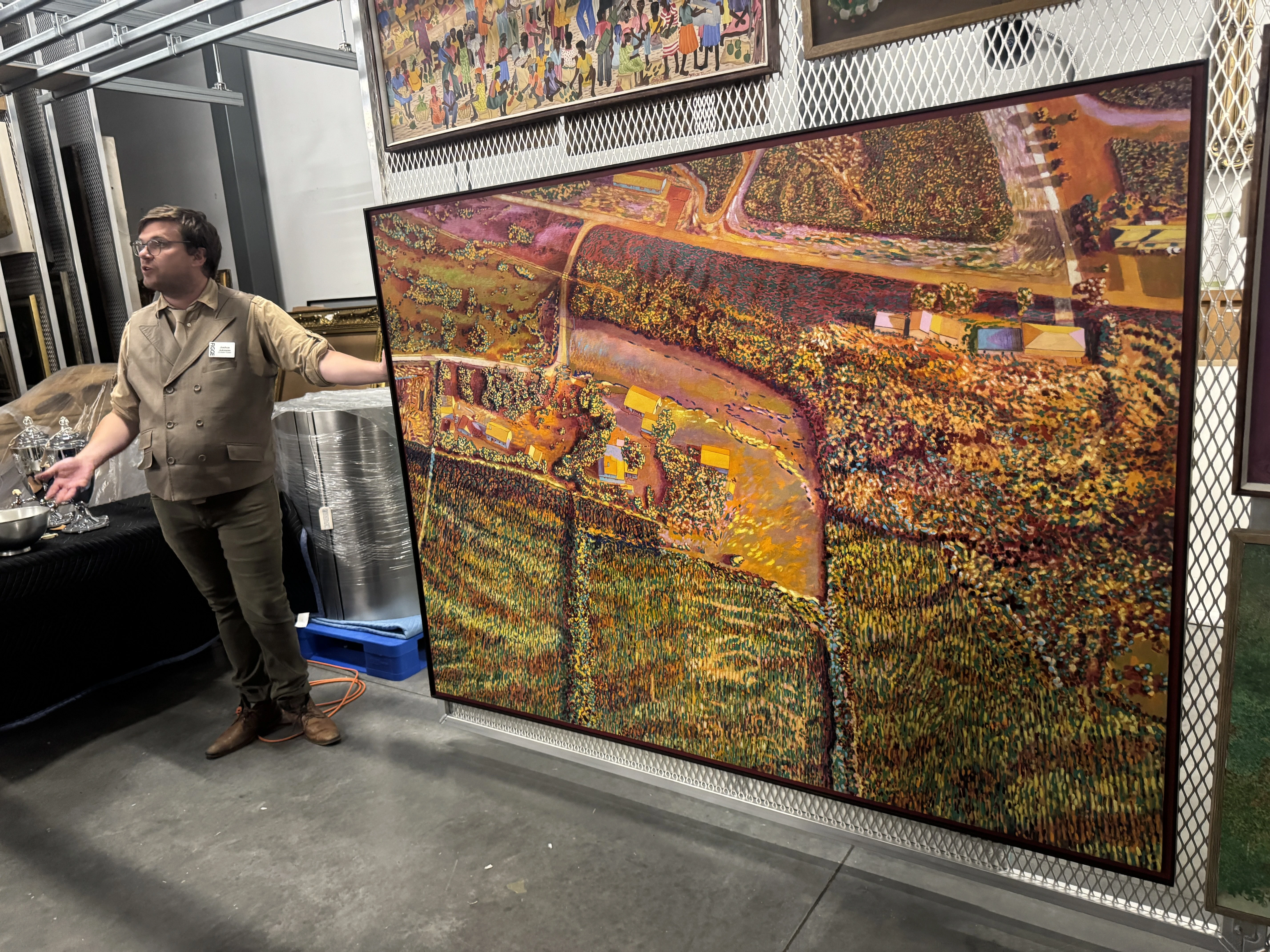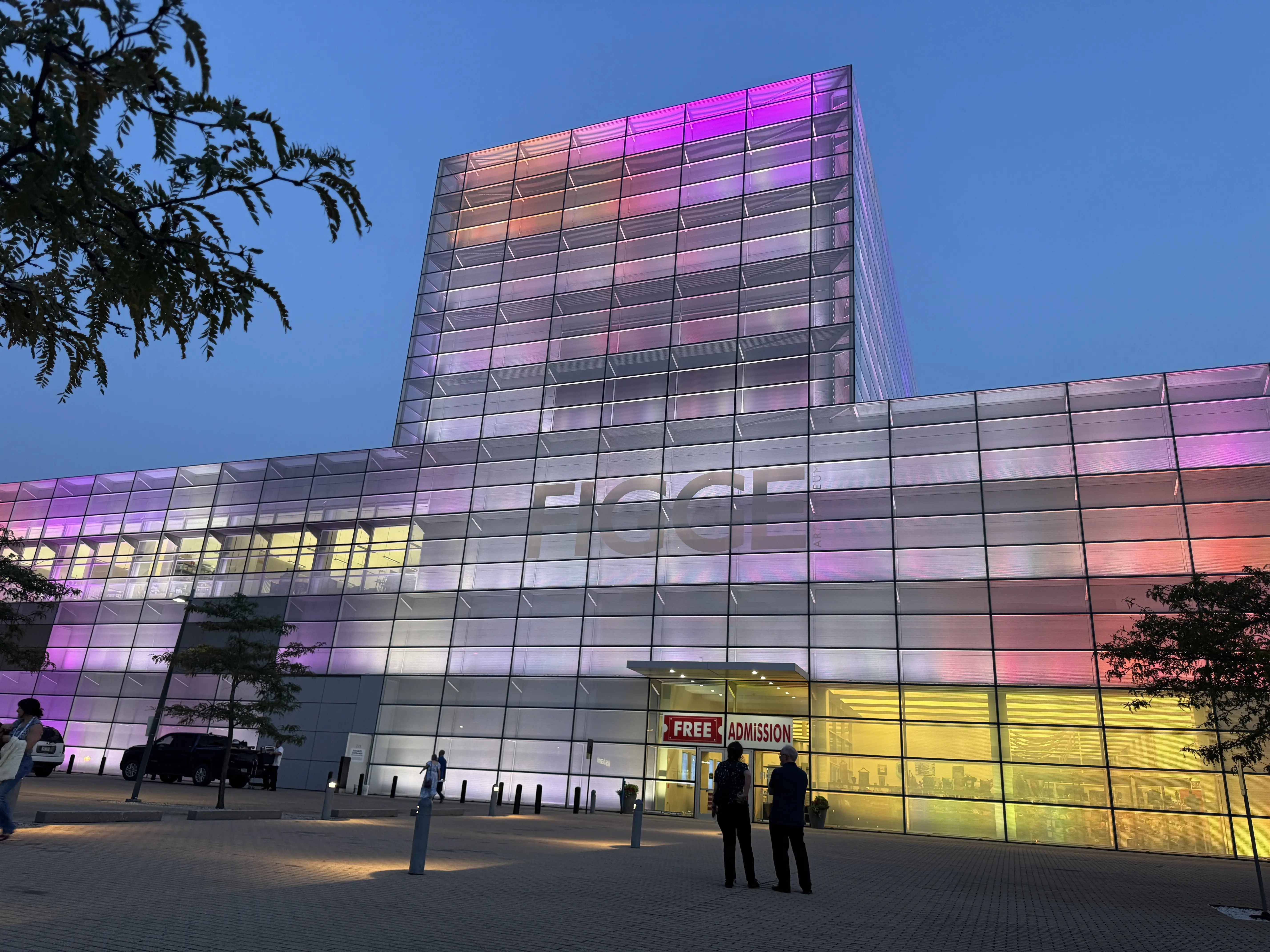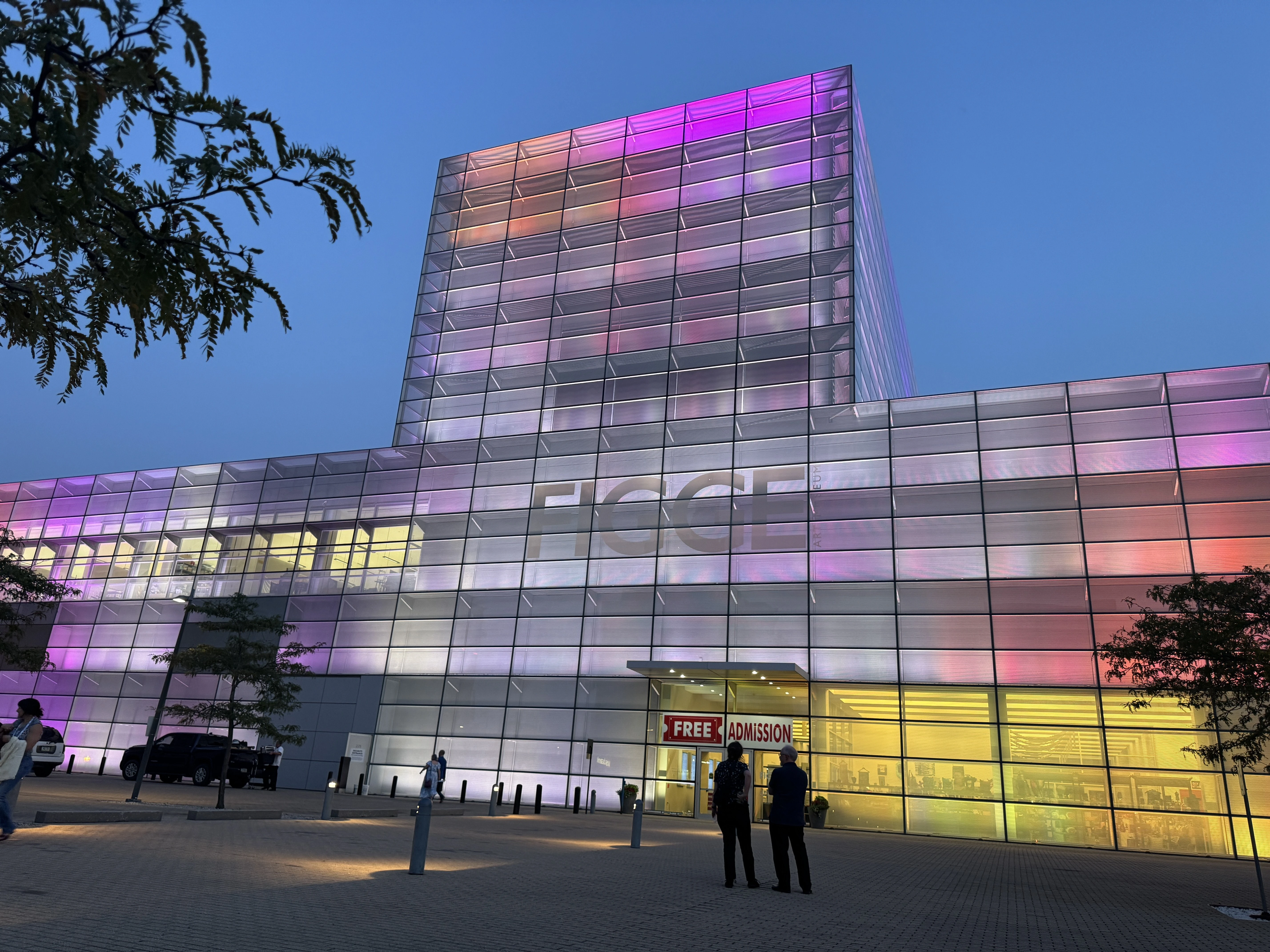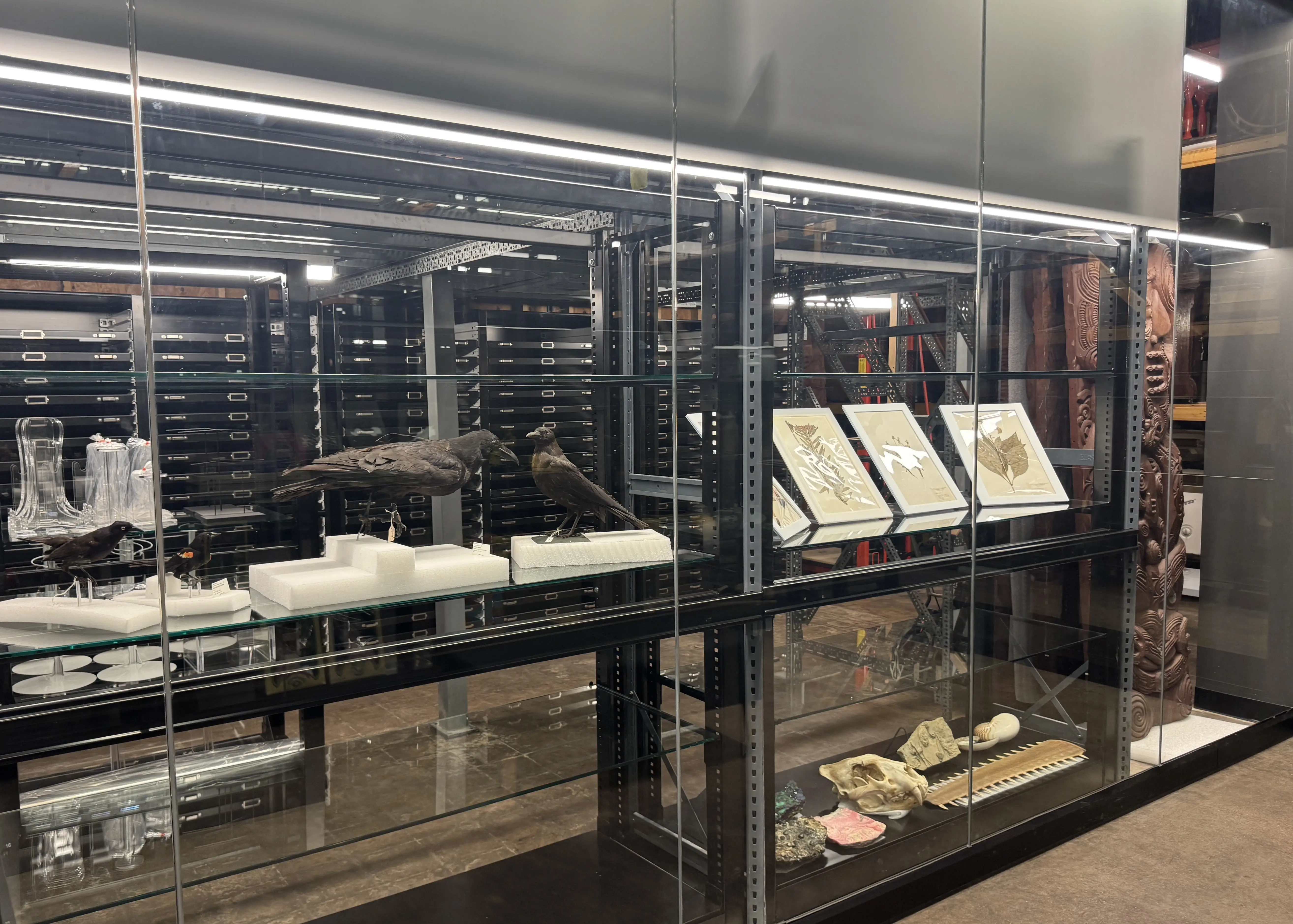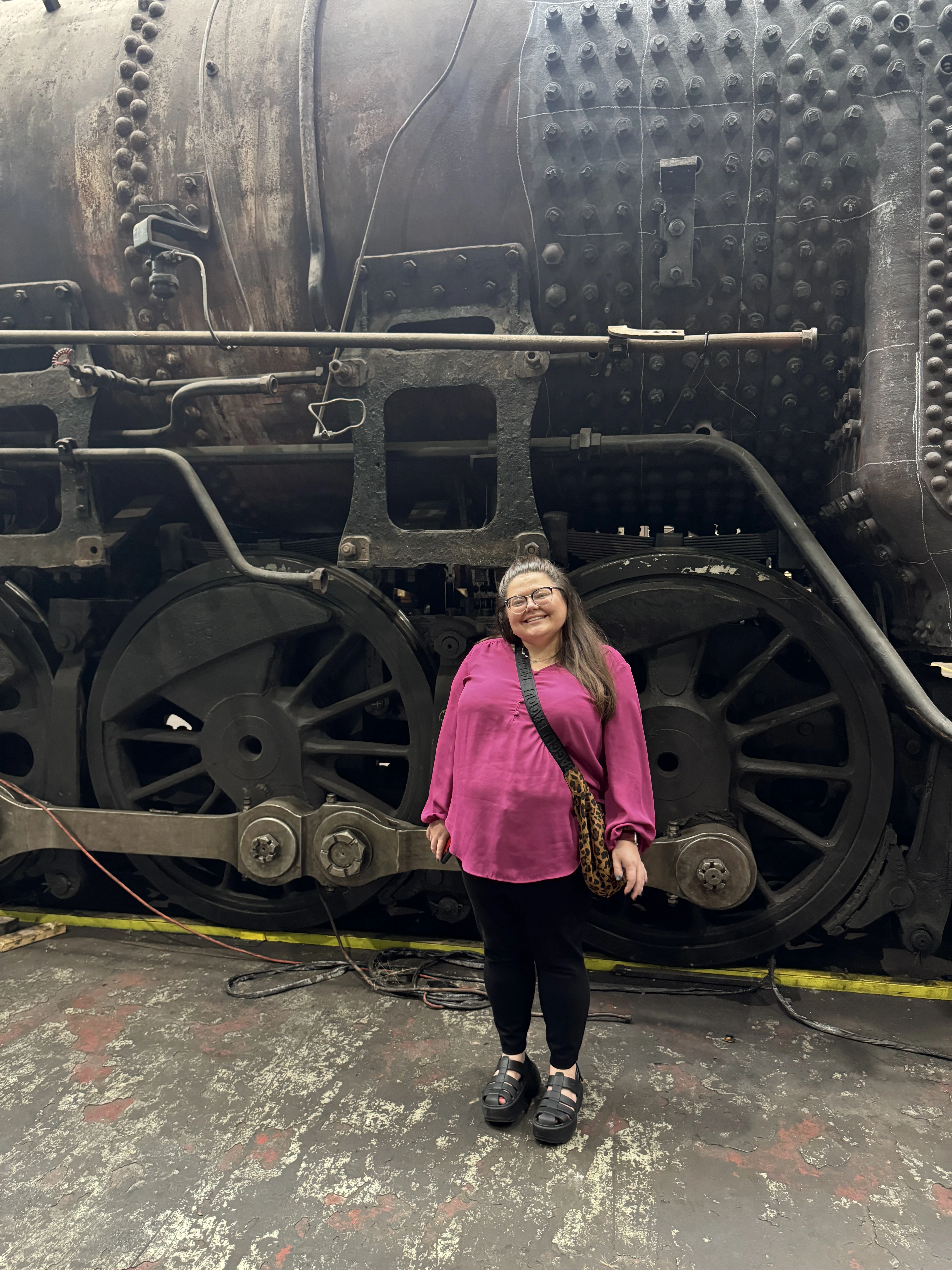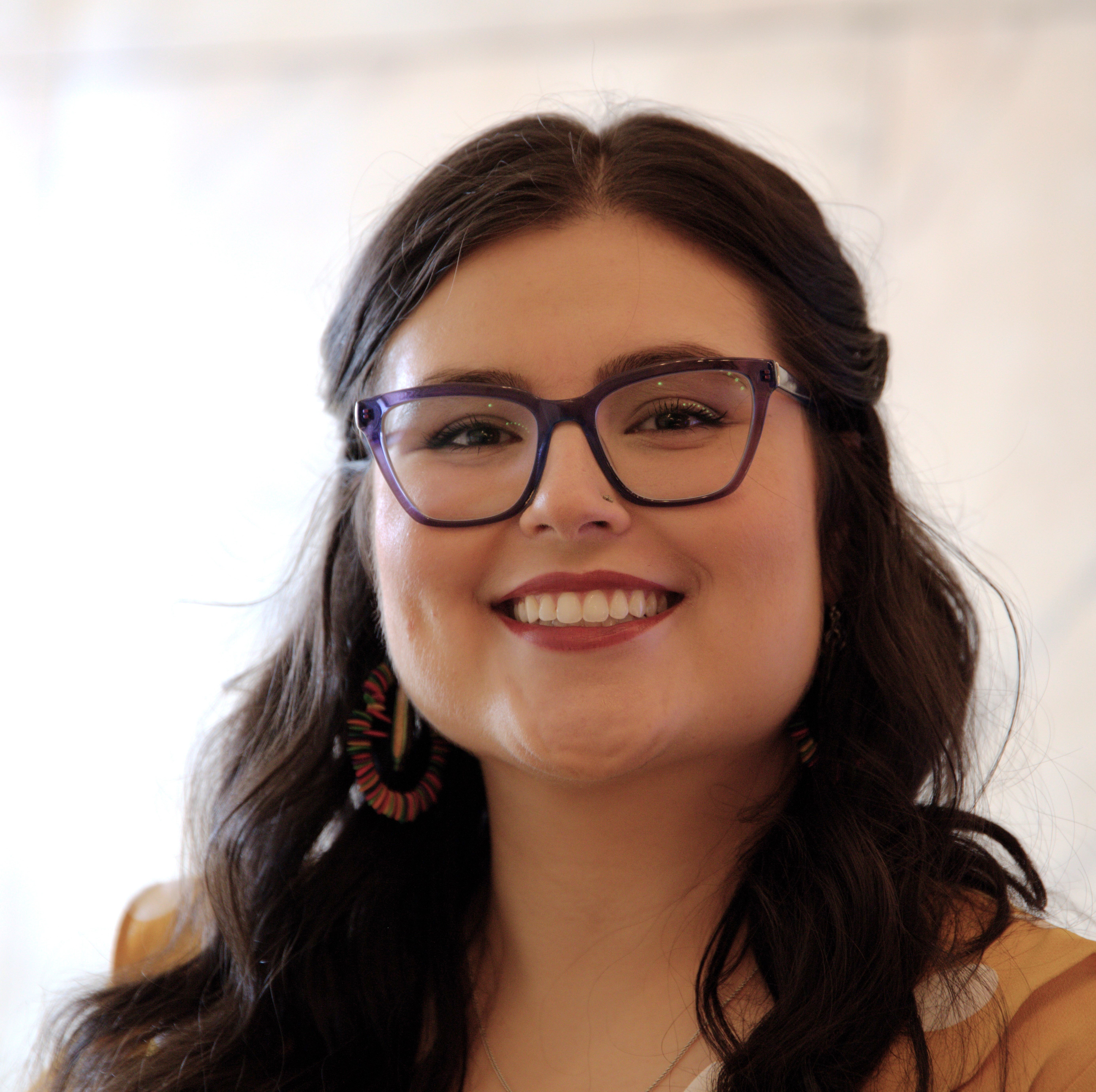Last week, Julie, Jackie, Maria, and I (Micaela) were fortunate to have the opportunity to gather with museum professionals from six different states at the Association of Midwest Museums Conference in the Quad Cities. We enjoyed three days full of learning, networking, and behind-the-scenes tours. It was truly an incredible experience — and a rare opportunity to see our logo next to the Field Museum's in print!
So, when we returned, I asked my colleagues to reflect on the experience and share a little bit about their a memorable moment, favorite session, and one key take away.
Executive Director Julie Emig's Most Memorable Moment: An Evening in the Garden
Wednesday night's post-session activity was the West End Museum Hop. We boarded a bus and visited the Putnam Museum, the German American Heritage Center & Museum, and the Quad Cities Botanical Center. We ended the evening at the gardens and enjoyed a sunset stroll in their children's garden, which includes a scaled version of the Mississippi River, several interactive elements, and lots of native plant species. The sound of the water and the summer cicadas perfectly set the scene for this fusion of art and nature.
Director of Communications Micaela Harris’ Most Memorable Moment: Behind-the-scenes at the Figge Art Museum
As if getting up close and personal with the Figge's unique art collection spanning decades of creation wasn't enough, we discovered a local connection that made me absolutely giddy. To set the scene, we just passed a Salvador Dali sculpture and are turning into the fourth bay of floor-to-ceiling storage racks. Out of the corner of my eye, I see a familiar set of colorful brush strokes on a large painting. I turn to Maria and say, "I think that's a Gregor." She says, "there's no way." And before I even have a chance to ask the kind curator giving the tour, he pulls the rack out to highlight the painting and says, "Here we have Harold Gregor’s Illinois Flatscape #53. An incredible example of a Midwest landscape." According to Maria, I squealed. Early in my career at the Museum, I wrote a PFOP about Gregor, arguably the most famous artist to ever emerge from McLean County (which I've linked here if you're curious). Ever since I've had an affinity for his work. To see it alongside the likes of world-renowned artists such as Dali, AND for it to be fawned over by others, made me beam with hometown pride, joy, and gratitude. That was a moment I don't think I'll ever forget. And, if I do, at least now it’s written down!
Curator of Collections Jackie Cain's Most Memorable Moment: Lighting Up the Museum
It was so memorable to watch the Figge Art Museum come alive through its large-scale integrated light installation by Leo Villareal entitled Evanescent Field. After an incredible behind-the-scenes tour and a day full of learning, it was special to sit outside for a moment with my colleagues and just take it all in.
Curator of Historic Interpretation Maria Mears' Most Memorable Moment: Viewing the Putnam's Visible Storage
It was exciting to see what visible storage can look like and the type of curiosity it can spark in visitors. While the Putnam's collection is four times the size of ours, seeing how they executed this new exhibit inspired new ideas for what we can do in our Merwin Gallery.
Secondary Highlight: exploring the Railroading Heritage of Midwest America (RRHMA). To interact with historic trains up close, like we did, was illuminating.
Julie's Favorite Session: "Disruption by Design: Rethinking Workplace Culture"
This session encouraged bold leadership and provided tangible, action-oriented solutions we can implement at the Museum to make it an even better place to be.
Jackie's Favorite Session: "Collections Activation Policies that Work"
This session provided solid strategies for building engagement with audiences, both new and old. It gave me lots of ideas on how we can better use our collection to share our stories and make an impact.
Maria's Favorite Session: History Happens Now - Collaborative Exhibitions in Small Museums
This session emphasized that what we do in exhibits doesn't need to be anything overly expensive or fancy. The output is more meaningful when the community feels represented and included in what we are doing. This session also really highlighted the importance of connecting visitors to what is happening now rather than whatever happened in the past.
Micaela's Favorite Session: "Leveraging the John Deere Effect"
While I attended several sessions on marketing strategies and exhibit design, the one I expected to get the least out of, I enjoyed the most. This panel session featured Quad Cities tourism officials, John Deere representatives, and the Figge Art Museum Executive Director. They highlighted their ongoing partnerships and how they all work together to improve the quality of life in their community. Their practical advice led to ideas that made me all the more excited to come home and work on continuing to grow our community partnerships.
Maria's Key Take Away: Collaboration is Key
We must work collaboratively to execute high-quality and engaging exhibits in 2025. The rising cost of materials and other resources has made it all the more necessary to be creative and rely on each other. I also found it validating that many museums are experiencing the same struggles we are in the current funding landscape, even institutions much larger than ours. It's a difficult time to be in the arts and culture sector, but it's exciting to have the opportunity to get creative and try new things.
Julie's Key Take Away: We are not alone!
Museums across the country are facing the same issues we are. It was inspiring to connect with other leaders who can empathize and with whom we can work together to make it through.
Jackie's Key Take Away: The Power of Community Collections
Museum collections hold the collective memories. The objects we collect aren't just objects. Rather, they are conduits for storytelling. They keep cultural knowledge alive, and they connect us to that knowledge. The work we do to preserve and grow our collections is vital to understanding who we are as a community.
Micaela's Key Take Away: Small Actions Can Make A Big Impact
Indigenous educator Larry Lockwood opened the keynote presentation at the conference. While he and presenters, Bonnie McDonald from Landmarks Illinois and Mark Treskson from the Urban Institute, shared invaluable insights about museums' vital roles within their communities, it was an anecdote from Lockwood that stuck with me the most. He shared a story of a man who walked up a mountain and placed a pebble in a stream to change the course of a river. My reductive retelling doesn't even come close to doing Lockwood's wise words justice. However, the moral of the story remains: even when we feel so powerless, small, persistent acts can create a big impact.
